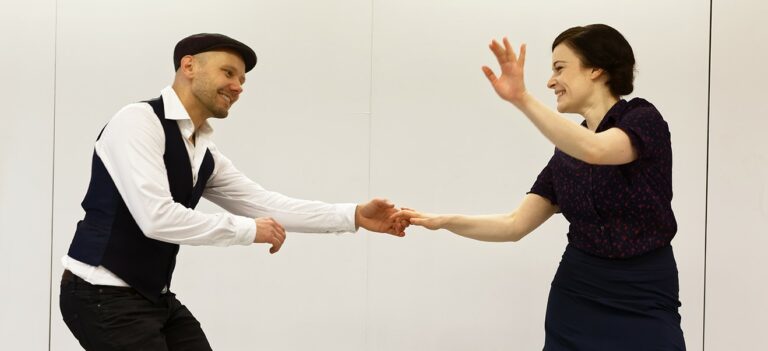Balboa
The Elegant Swing Dance with a Close Connection
Balboa is a sophisticated and elegant swing dance that has captured the hearts of dancers worldwide. Known for its close embrace and subtle footwork, Balboa offers a unique dancing experience that is both intimate and exhilarating. Unlike more expansive swing dances, Balboa thrives on small movements, intricate footwork, and the magical connection between partners. Whether you’re a seasoned dancer or new to swing, Balboa provides a fresh and delightful way to connect with music and people.
What is Balboa?
Balboa is a partnered swing dance that is characterized by its close hold, upright posture, and minimalistic movements. Unlike other swing dances that require a lot of space and broad movements, Balboa is danced in a tight, compact frame, making it ideal for crowded dance floors. The dance relies on a shared pulse between partners, creating a deep connection that allows for subtle variations and changes in direction. These nuances make Balboa a beautifully understated yet expressive dance form. Also Slow Balboa has been becoming more popular among Balboa dancers.
The History of Balboa
Balboa originated in the crowded dance halls of Southern California in the 1920s, where limited space led dancers to develop a style that could be performed in a close hold with minimal movement. Named after the Balboa Peninsula in Newport Beach, California, where it gained popularity, Balboa became a favorite for those who loved dancing to fast-paced swing and jazz music.
The dance enjoyed widespread popularity through the 1930s and 1940s but saw a decline after World War II, as newer dance styles began to emerge. However, the timeless elegance and unique style of Balboa found a resurgence in the early 1980s, and it has continued to grow in popularity ever since.

Why Dance Balboa?
Balboa offers a unique blend of elegance, rhythm, and connection, making it a favorite among swing dancers. Here are some reasons why you should consider learning Balboa:
Close Connection: Balboa is known for its close embrace, which fosters a strong connection between partners. This makes it perfect for dancers who enjoy a more intimate dance experience.
Perfect for Crowded Dance Floors: The compact style of Balboa makes it ideal for crowded venues where space is limited. Instead of large, sweeping movements, Balboa focuses on small steps, making it an excellent choice for social dance events.
Dance to Fast Music: Due to its minimalistic and efficient movement style, Balboa is well-suited for dancing to fast-paced swing and jazz music. However, it can also be enjoyed at slower tempos, providing versatility for dancers of all levels.
Elegant and Stylish: Balboa’s upright posture and refined movements give it an elegant appearance that stands out on the dance floor. It’s a dance that embodies grace, poise, and style.
Learn Balboa in Helsinki
Getting started with Balboa is easy and accessible, even for those new to swing dancing. Our dance club offers Balboa beginner courses in Helsinki. Beginner level courses teach the basic steps, such as “downhold basic,” “uphold basic,” basic figures, and simple variations that form the foundation of the dance. As dancers progress, they can explore more complex footwork, stylings, and advanced variations that showcase Balboa’s nuanced elegance.
If you’re looking for a dance that’s elegant, versatile, and filled with history, Balboa is the perfect choice. Sign up for our dance courses, step into the rhythm, and experience the magic of Balboa for yourself!
Balboa is an elegant swing pair dance danced close to each other, the magic of which arises from the shared pulse of the dancers.
Dance has developed in dance venues where space was scarce. Therefore, in balboa, dance is created with different step variations and changes of direction instead of large movements. Balboa is characterised by a pulse as well as a vertical and upright closed-grip dance position. Due to its simplicity and small movements, the balboa is well suited for dancing to fast-paced music, although it can also be enjoyed to the beat of a slower swing.
Balboa began to spread from Southern California in the 1920s and grew in popularity until World War II. Balboa, like lindy hop, was overshadowed by other dances after World War II for several decades, but again found greater popularity in the early 1980s.












